Magazine
Salish Sea Currents is an online magazine featuring the latest science from the 2014 Salish Sea Ecosystem Conference. Join us as we report on some of the key issues driving Puget Sound recovery.
RELATED ARTICLES
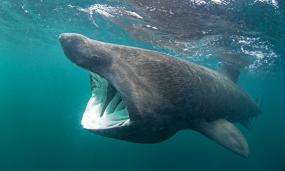
Will these gentle giants return to the Salish Sea?
A shark species the length of a bus was once common in the Salish Sea. Then it was labeled a "destructive pest" and nearly wiped out. Can the gentle and often misunderstood basking shark make a comeback?
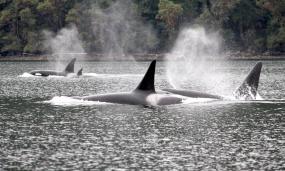
Under a new proposal, our local orcas — resident and Bigg’s killer whales — would each become a new species
A scientific paper, published on March 27th, spells out the unique physical and genetic characteristics that should make each group a separate species, with the proposed scientific names Orcinus ater for residents and Orcinus rectipinnus for Bigg’s.
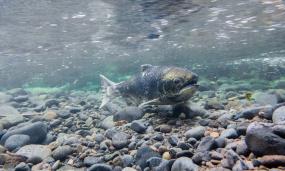
The words ‘in common with’ were pivotal to Judge Boldt’s ruling on Native American fishing rights
Three common words and their legal interpretation a half-century ago helped set the stage for a cultural revival among Native Americans while propelling an environmental movement that still resonates today. Environmental reporter Christopher Dunagan revisits the legal reasoning behind the famous Boldt decision that upheld tribal fishing rights in the state of Washington.
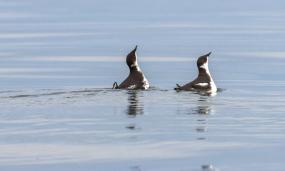
Science notebook: Winter studies of Puget Sound's threatened marbled murrelets
For years now, scientists have been braving the cold winter waters of Puget Sound to study one of the region's most enigmatic seabirds, the marbled murrelet. Listed as threatened under the Endangered Species Act in Washington, Oregon, and California, marbled murrelets nest in old-growth forests but find their food at sea. Much research on the birds has centered around the spring and summer breeding season, but less is known about what the murrelets do in winter. That puzzle prompted a team of scientists from the Washington Department of Fish and Wildlife to head out on the water last January. Writer and biologist Eric Wagner joined the expedition and brought back these notes from the field.
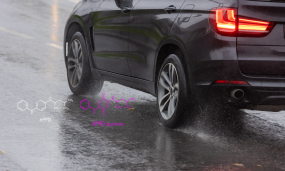
Lawsuits fly, as regulators come to grips with a toxic tire chemical
Finding a replacement for 6PPD in tires is one major challenge; another is to prevent the highly toxic derivative 6PPD-Q from reaching salmon streams and killing fish.
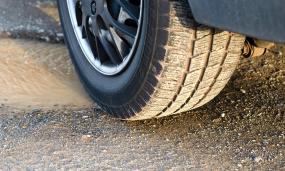
Scientists worldwide are immersed in studies of a deadly tire chemical
Research that began in Puget Sound has revealed much about the cellular-level assault on vulnerable salmon and trout, yet the puzzle remains incomplete.
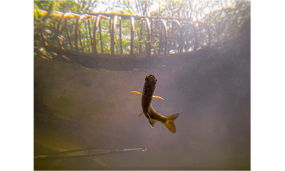
Photographing the 'Creek of Hope'
Longfellow Creek near West Seattle's industrial district still draws spawning salmon despite a century of city development and an onslaught of toxic chemicals. A current exhibit by photographer Tom Reese explores this often-overlooked gem of urban nature.
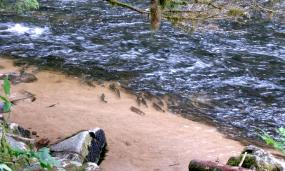
Surging numbers of pink salmon raise ecological concerns
An estimated 70% of all the salmon in the North Pacific are pink salmon. Scientists say the extreme abundance of pinks could be causing a "trophic cascade" that is harming species across the food web.
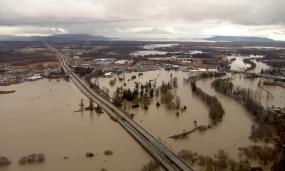
Studies target increasing flood risks
All across the region, communities are finding that rising seas and rising rivers are two sides of the same coin. New research funded by the Environmental Protection Agency may help managers target their responses to climate-fueled flood risks in Puget Sound. The following article was commissioned by the Habitat Strategic Initiative Lead (HSIL), a cross-agency team co-led by the Washington Departments of Fish and Wildlife and Natural Resources.
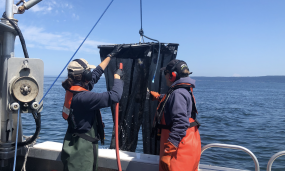
The ups and downs of zooplankton in Puget Sound
Zooplankton are critical to the marine food web, but until recently there have been few surveys of the zooplankton community in Puget Sound. Ongoing monitoring is now revealing a system full of complexity and surprises. The following article was commissioned by the Habitat Strategic Initiative Lead (HSIL), a cross-agency team co-led by the Washington Departments of Fish and Wildlife and Natural Resources.
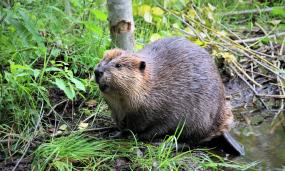
Program seeks alternatives to beaver dam removals
Beavers provide critical benefits for wetland ecosystems but can also alter the landscape in ways that are unpredictable for property owners and conservationists alike. New techniques are helping humans and beavers share the landscape with the goal of benefiting both parties. The following article was commissioned by the Habitat Strategic Initiative Lead (HSIL), a cross-agency team co-led by the Washington Departments of Fish and Wildlife and Natural Resources.
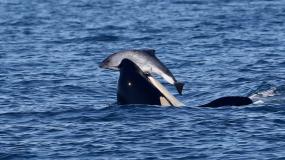
Southern resident orcas chase and sometimes kill porpoises. Why don’t they eat them?
Puzzling encounters between endangered killer whales and harbor porpoises point to questions about prey availability and whale culture, scientists say. Are the whales playing, practicing their hunting skills, or is something else going on?
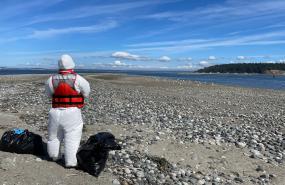
Avian flu comes to the Salish Sea
A new strain of avian flu has been sweeping the globe since 2020, leaving thousands of dead seabirds in its wake. This past summer, it arrived at a colony of Caspian terns at Rat Island in the Salish Sea, with catastrophic results.
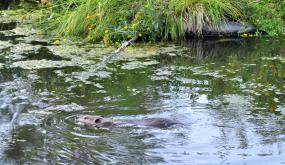
Can the age-old affinity between beavers and salmon be restored?
Salmon restoration groups are learning how to work with beavers to create better salmon habitat. The process hinges on reducing human-beaver conflicts while taking a natural approach to ecosystem recovery. The beavers are happy to help.
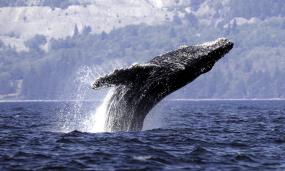
Humpback whales find their voice
The Salish Sea may be a giant ‘practice room’ for humpback whales as they get ready to sing in their winter breeding grounds in Hawaii and Mexico. A network of hydrophones is recording it all.
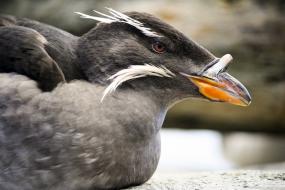
A tale of two islands
Were the islands half full of auklets or were they half empty? One scientist offers an insider's view of a newly published study of two Pacific seabird colonies. He says having good data for the paper was key, but finding the right title didn't hurt.

Dispatch from the last colony
Tufted puffins have become an increasingly rare sight in the Pacific Northwest. Biologist and writer Eric Wagner recently visited Puget Sound's Smith Island, home to one of the region's last surviving colonies of these colorful seabirds.
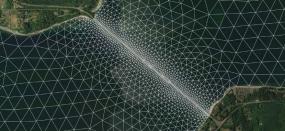
Salish Sea Model tracks pollution, currents and climate change
This article is the latest in a series about computer models and their uses within the Puget Sound ecosystem. Today, we look at the Salish Sea Model, one of several models in the region helping to predict water circulation, water quality and food-web relationships.
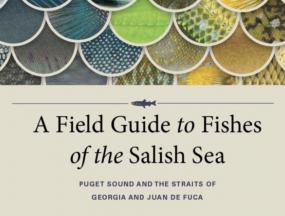
'A Field Guide to Fishes of the Salish Sea' (book review)
A new field guide brings together detailed accounts and illustrations of 260 species of fish known to occur in the Salish Sea. This review from EoPS editorial board member Joe Gaydos was originally published on the SeaDoc Society website.

When are waters considered hypoxic?
The search goes on for a set of definitions and thresholds to represent low-oxygen concentrations that threaten various aquatic creatures. Over the years, ecologists have relocated, reshaped and revised the word “hypoxia” to describe these conditions. In part four of our series "Oxygen for life" we look at how scientists determine whether oxygen levels are low enough to be considered harmful to sea life.
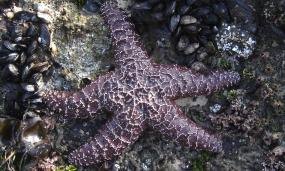
Oxygen for life: How low dissolved oxygen affects species in Puget Sound
Scientists are reporting a decline in oxygen-rich waters throughout the world. Causes for the decline vary from place to place but may involve climate change and increasing discharges of tainted water. In Puget Sound, low oxygen levels can occur naturally or due to eutrophication from human-caused pollution. In this five-part series, we describe the critical nature of oxygen to Puget Sound sea life. Scientists are finding that changes in oxygen levels can lead to physiological adjustments, shifts in predator-prey relationships and other repercussions throughout the food web.

How crabs respond to low oxygen in Hood Canal
As observed in Hood Canal, low-oxygen conditions can upend the lives of Dungeness crabs trying to stay alive. Levels of dissolved oxygen can alter predator-prey relationships for a multitude of species, affecting populations throughout the food web. Part two of our series "Oxygen for life" examines a crab case study.

Warmer waters will mean less oxygen for species
In time, lower dissolved oxygen worsened by climate change could increase the abundance of rare species in Puget Sound while putting populations of more common species into a tailspin. Part three of our series "Oxygen for life" looks at how warmer waters will gradually make it harder for many sea creatures to breathe.

A cat gets its feet wet
Biologists are intrigued by the prospect of island-hopping cougars in the Salish Sea. Could swimming ability lead to improved genetic diversity among the big cats?
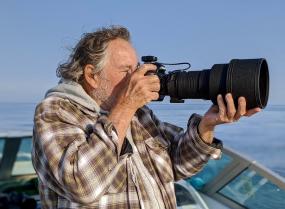
Remembering Ken Balcomb and his extraordinary life with killer whales
Environmental reporter Christopher Dunagan remembers the life and influence of pioneering orca researcher Ken Balcomb.
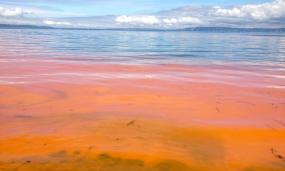
Understanding the causes of low oxygen in Puget Sound
How do excess nutrients trigger low oxygen conditions in Puget Sound and what do those conditions mean for the species that live here?
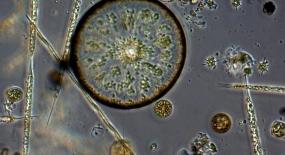
Tiny plankton play a mighty role in the health of Puget Sound
Diverse communities of microscopic organisms called phytoplankton make up the base of the aquatic food web. In that role, they are essential to the tiny animals that eat them, but phytoplankton are not dependent on others. Thanks to chlorophyl, these tiny organisms can generate their own energy from nutrients and sunlight. Despite their critical importance to a great diversity of sea life in Puget Sound, phytoplankton can also contribute to low-oxygen conditions, and some can be harmful in other ways.
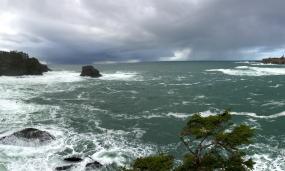
What drives Puget Sound's 'underwater Amazon'?
In a new series we are calling Ask a Scientist we interview local researchers to get their thoughts on some of the important but lesser-known scientific facts about the Puget Sound ecosystem. Today, we speak with University of Washington oceanographer Parker MacCready about Puget Sound’s “underwater Amazon” and why it has profound implications for Puget Sound science and policy. It all begins, he says, with the mixing of fresh and salt water and something called the estuarine exchange flow.
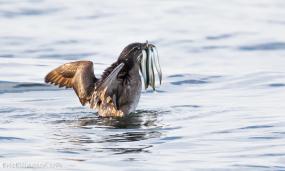
Whir! Chunk! Capture! The art of tagging rhinoceros auklets on Protection Island
Where do Protection Island's rhinoceros auklets go to find their food? Scientists hope GPS tags will offer new insight into the bird's still mysterious foraging behavior. Biologist and science writer Eric Wagner reports from the field.

Study raises questions about using ‘woody debris’ to restore streams
A new report says further study may reveal why experts cannot find expected benefits to salmon populations, despite widespread use of wood in stream restorations.
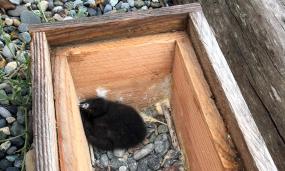
Notes from the field: The Illusion of abundance
Biologist and science writer Eric Wagner recently returned from a trip to observe pigeon guillemots on Protection Island. He wonders: How much do we really know about the health of seemingly abundant bird populations?
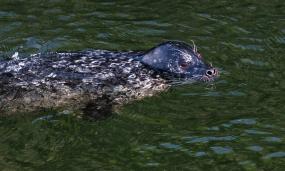
An eye on harbor seals
Occasionally, our magazine includes reports and essays from guest writers on the subject of Puget Sound ecosystem recovery. Biologist and author Eric Wagner has this look at an ongoing harbor seal survey at the mouth of the Stillaguamish River. Wagner says the study hinges on a basic question: Who is eating the salmon?
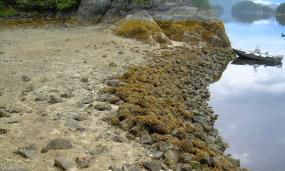
First modern clam garden takes shape in Puget Sound
The Swinomish Indian Tribal Community has begun constructing the first known clam garden to be built in modern times. They hope that what was once an ancient way of cultivating shellfish can now be a hedge against climate change.
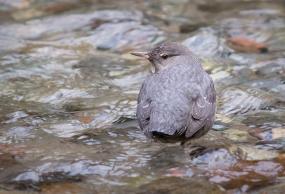
Bird populations improve after Elwha Dam removals
Dam removals are often associated with salmon recovery, but new research on the Elwha River suggests that birds also benefit. Scientists say birds are a sometimes-overlooked indicator of river health.

Four years after Tahlequah's journey, the legal and ethical debates over orca protection continue to evolve
It has been four summers since a mother orca’s dramatic vigil brought worldwide attention to the plight of Puget Sound’s southern resident killer whales. A recent gathering of legal experts, conservationists, and academic scholars looked at how perceptions of the whales have changed since then and whether laws and policies should reflect new thinking about ethical responsibilities to orcas and other animals.

Young sunflower sea stars are hungry for urchins
Endangered sea stars could help control urchin populations, aiding kelp forests in the Salish Sea, according to a new study at the University of Washington’s Friday Harbor Laboratories. Scientists say captive baby sea stars eat even more urchins than their adult counterparts.
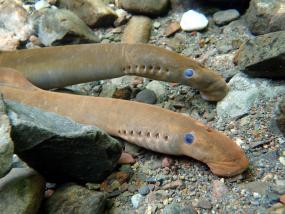
Lamprey legacy: Eel-like fish return after dam removal
Prehistoric-looking lamprey are recolonizing parts of the Elwha River that they have not occupied for more than 100 years. Like salmon, the culturally and ecologically important fish also move from saltwater into rivers to spawn. And like salmon, lamprey were devastated by the dams that once blocked their way. We conclude our series 'Returning home: The Elwha's genetic legacy.'
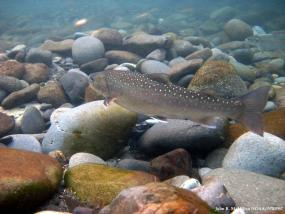
Good news for bull trout in the Elwha
Bull trout appear to be thriving in nearly every section of the Elwha River. Populations there have at least doubled in the years since dam removal, signaling good news for a species that has struggled throughout the West. We bring you part six of our series 'Returning home: The Elwha's genetic legacy.'

Opening the door for coho, chum, and pink salmon
Restoration managers are hopeful that populations of coho, chum and pink salmon will rebound on the Elwha River as the fish take advantage of newly accessible habitat. Part five of our series 'Returning home' examines the importance of genetically distinct salmon runs.

Sockeye among 'biggest unknowns' for Elwha salmon recovery
The return of sockeye to the Elwha River is intriguing scientists. Could nearby freshwater kokanee help re-establish resident populations? We continue with part four of our series 'Returning home: The Elwha's genetic legacy.'

Returning home: The Elwha's genetic legacy
Following dam removal, migratory salmon have been free to swim into the upper Elwha River for the first time in 100 years. Their actual behaviors and reproductive success may well be driven by changes in their genetic makeup. Our seven-part series 'Returning home' examines how the fish are doing and whether the Elwha's genetic legacy remains intact.
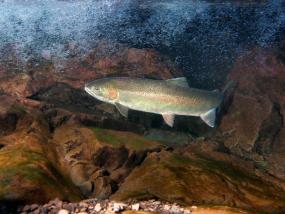
Wild steelhead still a force in the Elwha
Migration patterns have apparently reawakened for the Elwha River's wild steelhead. Studies show that the fish may have retained much of their genetic drive despite 100 years of being trapped behind dams. We continue our series 'Returning home: The Elwha's genetic legacy' with part two of seven.
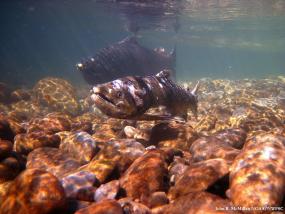
Will the mighty spring Chinook rise again?
Our series 'Returning home: The Elwha's genetic legacy' continues with a look at the possible return of spring Chinook to the upper portions of the Elwha River. We bring you part three of seven.
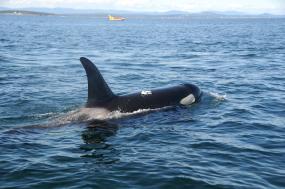
Placing microphones on orcas offers a point-of-whale perspective on underwater noise
Research on the sounds and feeding behavior of Puget Sound's southern resident orcas is providing new insight into how the whales respond to underwater noise. A recent online conference brought together some of these findings along with discussions on how to reduce the impacts of noise from vessel traffic.
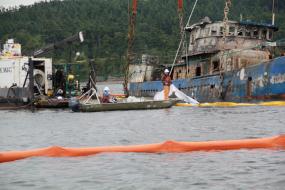
Derelict vessels prompt cleanup efforts
A state law going into effect this month will significantly increase funding for the cleanup of abandoned and derelict vessels in Puget Sound. The funding will add about $4.3 million annually to remove hazardous sunken wrecks and related pollutants.
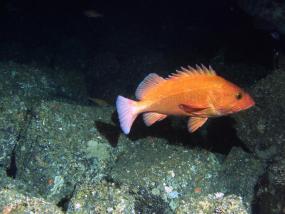
Are yelloweye rockfish on the path to recovery?
New research suggests that recovery efforts are working for Puget Sound’s threatened yelloweye rockfish. Preliminary models show "considerable improvement" in population numbers.
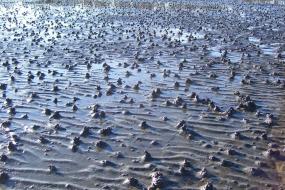
'Invertebrate engineers' combat sea level rise
A pilot project to create a 'living dike' in Canada's Boundary Bay is designed to help a saltwater marsh survive rising waters due to climate change.
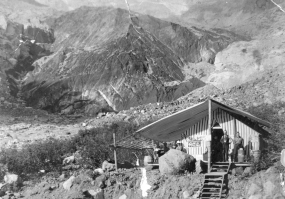
The retreating glaciers of Puget Sound
Puget Sound's glaciers are melting rapidly due to climate change. The North Cascades mountains have lost about 56% of their glacial ice while estimates show that glaciers in the Olympics could be gone within the next 50 years. Scientists say salmon and other species could be hard hit as the region loses its “giant storage tank” of ice.

Rethinking flood control for the Nooksack River
Can restoring the natural balance of the Nooksack River also reduce flood risks? Officials on both sides of the U.S.-Canada border are taking note as climate change raises the stakes.
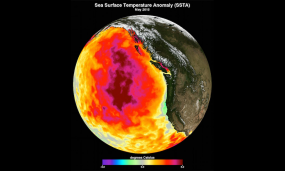
Model of heat wave 'blob' shows unexpected effects in the Salish Sea
The marine heat wave that struck the Pacific Ocean in late 2013 also caused large changes in temperature in the Salish Sea, but scientists are still puzzling over the impacts of those changes on Puget Sound's food web. The so-called "blob" of warmer than average water was thought to have increased the production of plankton, which potentially benefits creatures like herring and salmon that feed on the tiny organisms. A new paper in the journal Frontiers in Marine Science calls that interpretation into question, pointing to a computer model that links the cause to higher-than-normal river flows in the region.
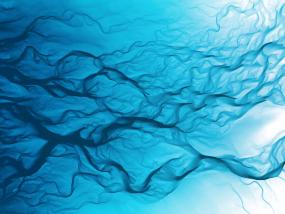
How do you build an estuary? The answer lies in Puget Sound’s geologic history
Puget Sound is often referred to as the second largest estuary in the United States behind only Chesapeake Bay, but its overall size may be less important than its complexity. The place is defined by the mixing of saltwater from the ocean and freshwater from creeks and rivers that create an almost alchemical transformation of habitat. In this article, we look at the geologic forces that formed Puget Sound and made it the dynamic system that we understand today.

Scientists look for answers in methane bubbles rising from bottom of Puget Sound
Large plumes of methane bubbles have been discovered throughout the waters of Puget Sound prompting questions about the Puget Sound food web, studies of earthquake faults and climate-change research.
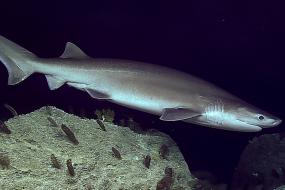
Why are so many sixgill sharks washing up in Puget Sound?
Over the past year, the Washington Department of Fish and Wildlife has reported an unusually high number of sixgill sharks found washed up along Puget Sound's shoreline. Four dead sharks in all were spotted, alarming scientists who believe that the large predators use Puget Sound as a pupping ground. Sixgills are rarely seen in Puget Sound but are one of its largest fishes, reaching lengths of up to 16 feet. Some speculate that warmer-than-usual waters could be a factor in the deaths, but the cause remains a mystery. We spoke with Fish and Wildlife biologist Lisa Hillier.

Learning from a legacy of overfishing
Fishing for rockfish was once promoted as a sustainable alternative to salmon harvests, but when rockfish numbers plummeted, fisheries managers realized they had a problem. Now a rockfish recovery plan seeks to reverse the damage as scientists learn more about protecting this once-popular game fish.
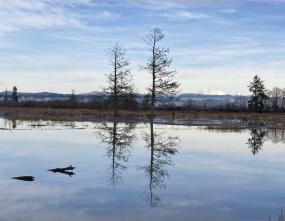
Making room for salmon
How can Puget Sound generate more salmon? That question has been at the center of ecosystem recovery efforts for decades. But even as scientists and conservationists make progress on many fronts — from breaching dams to cleaning up the water — they have faced one especially complicated and frustrating limitation: Salmon need more estuaries. We look at how local tribes are working to restore this critical habitat.

Lost freshwater salmon population may still inhabit Lake Washington
Scientists think they may have discovered a lost population of native kokanee salmon in Lake Washington. Salmon watchers are monitoring local creeks this fall to confirm the finding.
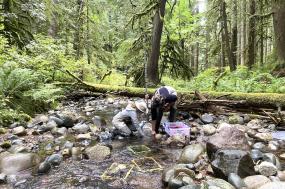
Can 'bug seeding' improve the health of local creeks?
Bug seeding involves moving beneficial insects and other aquatic invertebrates from healthy streams to streams where these creatures are missing from the food web.

New studies aid kelp conservation
Bull kelp is easily recognized by its wavy leaves and long, floating stipes that sometimes wash ashore like slimy green bullwhips. In that sense, it is one of the more familiar types of seaweed in Puget Sound. But as kelp forests decline throughout the region, scientists are finding that there is much about this increasingly rare species that remains a mystery.

Taking the temperature of salmon
Warming waters threaten the recovery of salmon in Puget Sound. New findings about stream temperature could help salmon survive the threats of climate change.
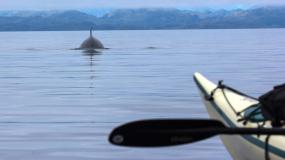
Solitary minke whales lurk in the waters of Puget Sound
A resident population of minke whales is catching the attention of scientists who want to learn if the elusive mammals are found here year-round. While small compared to their cousins the blue whales, minkes are still among the largest creatures in the Salish Sea.
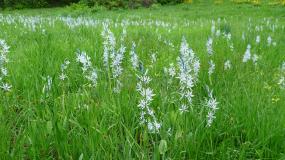
Indigenous Plants Forum raises awareness of native botanical treasures
A Lopez Island-based nonprofit says the protection of critical habitat for native plants can also preserve a wealth of traditional knowledge. The group is working with private landowners to raise awareness of culturally important plants hidden in the bogs and underbrush of Puget Sound's natural areas.

"Sounders" arrive as gray whales decline along the coast
Each spring, about a dozen gray whales make a brief detour into the Salish Sea before heading north to their feeding grounds in the Arctic. Biologists dubbed these whales "Sounders" after first noting their presence in the 1990s, and the whales have become rare but widely anticipated visitors to local waters. The whales were spotted again this year, but biologists have documented a 24 percent decline in gray whale populations along the West Coast.
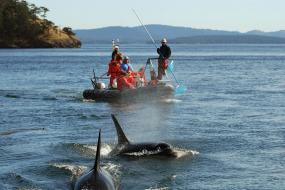
Southern residents’ winter diet comes into focus
A 2021 paper in the journal PLoS ONE provides a clearer picture of what endangered southern resident orcas eat throughout the year. Chinook salmon make up the bulk of the whales' diet, but the paper suggests that other salmon species and non-salmonid fishes can also play important roles depending on the season.
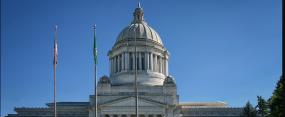
State agencies will focus on improving environmental justice under new law
The recently approved HEAL Act requires the state of Washington to address issues of environmental justice within its agencies. The Act is expected to be signed by the governor and focuses on inequities in environmental health conditions for disenfranchised populations.
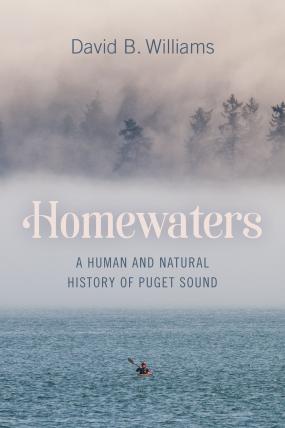
'Homewaters' blends natural and cultural history of Puget Sound
A new book explores our complicated connection to the ecosystem we call home. We interview author David B. Williams about Homewaters: A Human and Natural History of Puget Sound, published this month by the University of Washington Press.
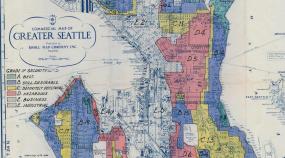
Why is so much pollution found in disadvantaged communities?
Researchers are looking at the forces of discrimination that worsen the environmental health risks for some communities.
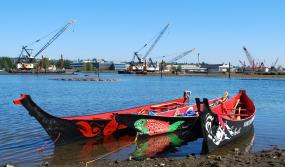
Diverse populations benefit from targeted efforts to improve environmental justice
Years of struggle have led to reduced pollution and a stronger sense of community in the Duwamish Valley. As cleanup efforts there continue, environmental justice has come front and center for the area's diverse populations.
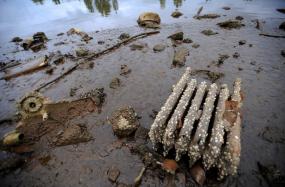
Revised toxic-cleanup rules will increase focus on environmental justice
An update to state rules regarding the cleanup of toxic pollution is expected to bring more attention to factors like race, ethnicity and income within populations that live near contaminated sites.
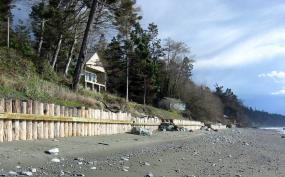
Is shoreline armoring becoming a relic of the past?
Close to 30% of Puget Sound's shoreline is armored with seawalls and other structures meant to protect beaches against rising tides and erosion. But science increasingly shows that these structures are ineffective and cause significant harm to salmon and other creatures. State and federal agencies have been encouraging private property owners to remove armoring in a race to improve habitat, but why did so much of it start appearing in the first place?
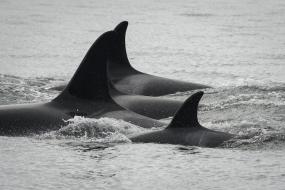
Killer whale CSI
Collisions with boats and other interactions with humans are "significant" causes of death for killer whales in the northeastern Pacific, a recent study says. The findings come from one of the most comprehensive looks at killer whale pathology to date, but scientists say determining how a killer whale may have died is often notoriously difficult.
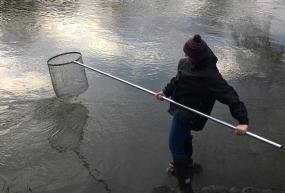
Once hearty 'hooligans' declining in the Salish Sea
A river spawning species of forage fish known as the longfin smelt is rare and getting rarer in the Salish Sea. Biologists are looking into the mysterious decline of the ‘hooligans’ of the Nooksack.
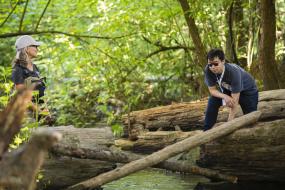
Timeline: The search to find a chemical that kills coho salmon in urban streams
The search for why large numbers of spawning coho salmon have been dying in Puget Sound's urban streams goes as far back as the 1980s and culminated this year with the discovery of a previously unidentified chemical related to automobile tires. We offer a detailed timeline for the discovery.
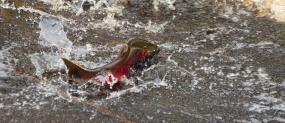
Scientists hunt down deadly chemical that kills coho salmon
Environmental engineers and chemists at the University of Washington Tacoma have identified a mysterious compound implicated in the deaths of large numbers of coho salmon in Puget Sound. The chemical is linked with a rubber additive commonly used in tires and is thought to kill more than half of the spawning coho that enter the region's urban streams every year.
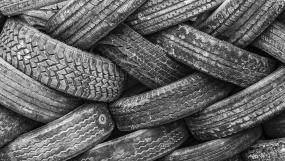
The history and chemistry of tires
Modern automobile tires are a complex mixture of chemicals, all used together in different ways to give tires their structure and properties, including riding comfort, safety and long life. Chemicals from tire wear particles are now thought to be responsible for the deaths of large numbers of coho salmon returning to spawn in Puget Sound streams.

Combining bugs and chemistry in Soos Creek stormwater study
Many creeks and waterbodies in Puget Sound may look pristine, but most face serious threats from stormwater pollution. A new study at Soos Creek shows how mud-dwelling bugs, traditional chemistry and digital "heatmaps" can be used to track stormwater impacts and identify the most polluted areas. Scientists and planners hope that this may one day lower the price tag on costly stormwater fixes.
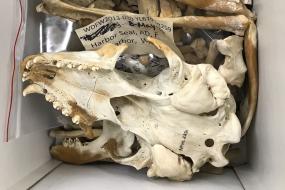
History of food web found in harbor seal skulls
Tiny bone samples show that seals alter their diets as conditions change. The findings could help scientists understand whether seals are contributing to local salmon declines.
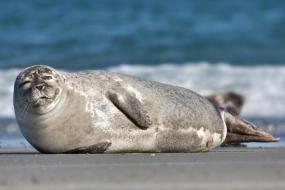
Probing for answers to control seal populations
Last month's federal authorization to kill more than 700 sea lions to protect salmon runs along the Columbia River is prompting discussions of similar actions for harbor seals in Puget Sound. But experts say the situations are very different with many unanswered questions.
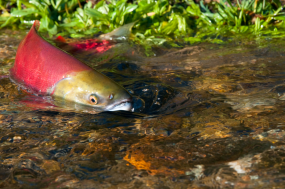
Disease may play significant role in salmon declines
Few environment problems in the Salish Sea have been studied more than the steep decline in salmon populations. But one potential contributor to these declines has gained less attention. Scientists say infectious disease may play a wider role than previously understood.
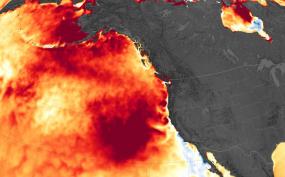
'The blob' revisited: Marine heat waves and the Salish Sea
Years after the appearance of the devastating marine heat wave known as "the blob," scientists are still working to understand how it has affected the Salish Sea. In some ways, they say, it is like the blob never left.
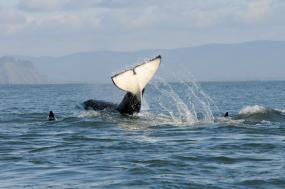
Orcas without borders
The Salish Sea’s endangered southern resident orcas travel freely across the U.S.-Canada border, unconstrained by political boundaries. But while they don’t require passports, they can still face differing policies and conditions as they go back and forth between nations. We look at some of the ways that the United States and Canada compare in their efforts to protect the whales.
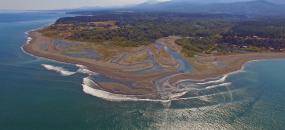
Seawall removal reaps benefits of Elwha recovery
The Elwha River has become famous as the site of the largest dam removal project in U.S. history. Several years ago, scientists began knocking down another barrier about a mile away from the river's delta. They removed a large seawall along the Salish Sea shoreline and discovered that sediment from the dam removal had huge benefits for their project.
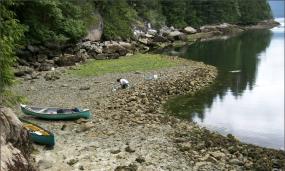
How to plan a clam garden
The revival of an Indigenous aquaculture practice has come to the southern Salish Sea. Clam gardens could help First Nations in British Columbia and Washington state address issues of climate change and food sustainability.
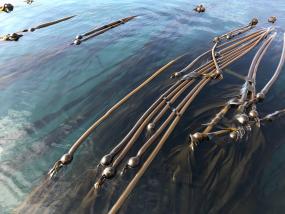
A seed bank for the sea
Identifying kelp stocks that are tolerant of warmer waters could help the Salish Sea’s iconic underwater forests survive climate change.

New Seattle seawall improves migratory pathway for young salmon
Design innovations at the new seawall along Seattle's waterfront could inspire improvements for other shoreline structures around Puget Sound. They may even encourage broader regulatory changes that enhance habitat for migrating salmon and other species.

Delicious and now endangered: Can the pinto abalone make a comeback?
The pinto abalone was a popular sport catch for divers in the Salish Sea until its numbers plummeted to near extinction. Now, the delicious marine snail is on the endangered species list and the focus of an ambitious hatchery and replanting program. A broad coalition of partners has released more than 20,000 young pintos into the wild with the hope that the population will start to rebound.
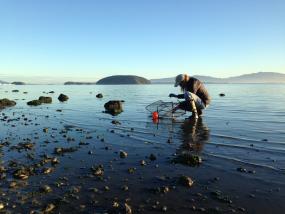
Search for invasive green crab continues during pandemic
The state's stay-at-home order has halted much of the field research that would normally be underway in Puget Sound this spring, but a small group of scientists and volunteers have been able to continue their search for an invading marauder along the shoreline. Their work has been classified as critical by the state.
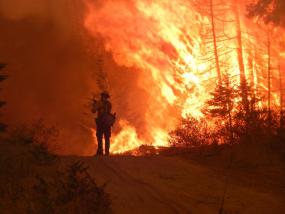
Fire danger returning to Western Washington
Historically, the eastern part of the state has seen the largest impacts from fires, but climate change is now increasing the risk west of the Cascades. That could have big implications for many rural communities throughout Western Washington, including those in the Puget Sound region.
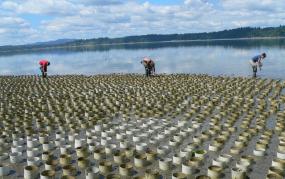
A history of Puget Sound's 'boss clam'
The geoduck has earned an honored place as Puget Sound's largest and most distinctive native clam, but how much do we really know about it? Often seen as a culinary curiosity, the geoduck has only been commercially harvested on a large scale since the 1970s, and the clam's current popularity is based mostly on demand from Asian markets. Nevertheless, this deep-burrowing mollusk has always been a signature part of the Salish Sea ecosystem.

Puget Sound's 'warm snow’ makes region vulnerable to climate shifts
Climate models project that if carbon emmisions continue as they are now, the vast majority of watersheds feeding Puget Sound will receive more rain and far less snow by 2080, causing increased flooding and other dramatic changes to the freshwater ecosystem. We look at the past and possible future of the region's snowpack and what this might mean for salmon and other species — including humans.

Air contaminants, such as mercury and PCBs, undermine the health of Puget Sound
High levels of mercury and other toxic chemicals are showing up in seemingly remote and pristine parts of the Puget Sound watershed, the result of atmospheric deposition. Scientists talk about a “dome” of pollution hanging over urban areas, leading to a never-ending cycle of persistent compounds working their way through the air, onto the land and into the water.
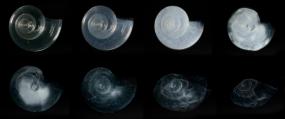
Rate of ocean acidification may accelerate, scientists warn
Last summer, scientists met at the University of Washington to address alarming findings concerning the rapid acidification of the world's oceans. Experts at that symposium warned that wildlife in the Salish Sea, from salmon to shellfish, may start to see significant effects from changing water chemistry within the next 10 to 20 years. This article summarizes the symposium's key findings and was commissioned and edited by the Washington Ocean Acidification Center which hosted the gathering. Funds for the article were provided by the Washington state legislature. [A version of this article was originally published by the Washington Ocean Acidification Center.]
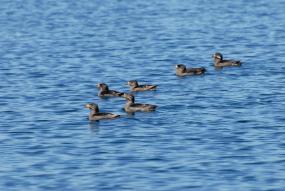
A health check for seabirds
Scientists are still trying to understand what caused the deaths of thousands of rhinoceros auklets in the Salish Sea in 2016. Some studies point to disease as a central factor in that incident and potentially other large seabird die-offs along the coast. That is prompting a deeper look at what makes these birds sick, and how local populations are faring. We followed a group of researchers as they gave a health checkup to a breeding colony of rhinoceros auklets on Protection Island.
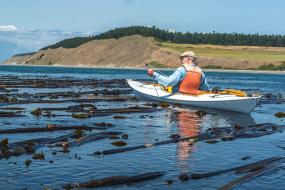
Kelp crisis? Decline of underwater forests raises alarms
They rival tropical forests in their richness and diversity, but Puget Sound's kelp beds have declined steeply in recent decades. Scientists are just starting to understand the extent of these losses. What they are finding is bringing kelp to the forefront of Puget Sound's environmental concerns.
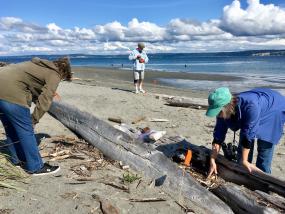
Tracking the trash: Inside a marine debris survey
Volunteer researchers are tracking the plastic and other debris washing up on Puget Sound's beaches. They hope the data can be used to protect sea creatures from the growing amounts of trash littering the world's oceans. [A version of this article first appeared in the COASST blog.]
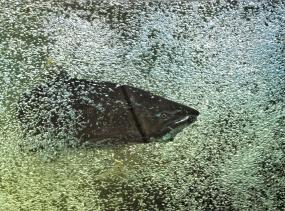
'Early migration gene' tied to unique population of Chinook
Spring and fall Chinook salmon were thought to be alike until researchers discovered a gene for early migration. Now, federal biologists and legal experts are struggling to decide if spring Chinook should be granted their own legal protection under the Endangered Species Act.
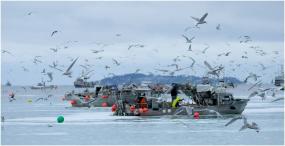
Ancient harvests: A history of Salish Sea herring
Scientists believe that herring have been a staple of Salish Sea food and culture since humans first arrived here at least 12,500 years ago. That importance has continued into modern times, even as herring numbers have declined in parts of the region.
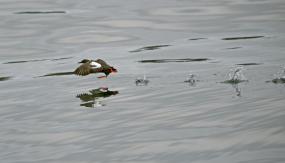
Unsung seabirds could help track Puget Sound health
Pigeon guillemots have attracted relatively little scientific attention compared to other seabirds in Puget Sound. That may be because their population is generally stable, but a group of citizen scientists is helping to put guillemots on the conservation radar. They hope the birds can be used as an indicator of Puget Sound health.
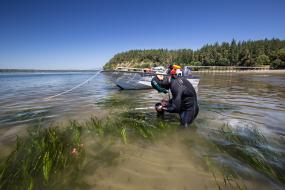
Science in the spotlight: Eelgrass recovery
The Washington Department of Natural Resources is studying new ways of increasing ecologically important eelgrass habitat in Puget Sound. It is part of the state's effort to boost eelgrass 20% Sound-wide by 2020. So far, recovery of the species has fallen short of that goal, but transplanting efforts are showing promise.
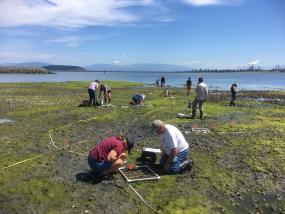
State aquatic reserves lean heavily on citizen scientists
Eight aquatic reserves in Puget Sound are being studied by volunteers working under the direction of state experts. Washington Department of Natural Resources manages the reserves with guidance from nearby communities.
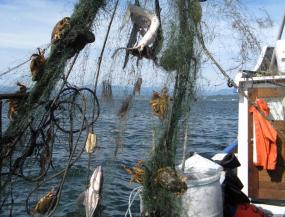
Ghost nets still fishing in the deep waters of Puget Sound
New technology is helping to remove deadly “ghost nets” that have been lost in the depths of Puget Sound. It is part of an effort that saves millions of animals every year, but managers say better reporting of these lost nets by fishermen is still needed.
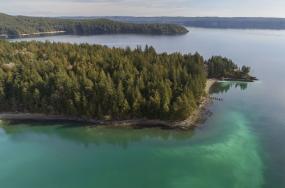
The herring defenders
Each winter and spring, researchers survey the sometimes spectacular spawning events of Puget Sound's Pacific herring. They have found wide swings in the fish's population and an overall decline in herring numbers since the 1970s, but little is known about the cause or what this might mean for the health of the food web. We spent a day with a biologist spotting herring eggs and considering the future of one of our region's most ecologically and culturally important fish species.
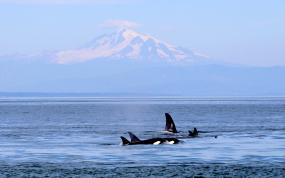
Social networks a key to orca survival
Understanding the social networks and family bonds of Puget Sound's southern resident orcas may be critical to keeping the endangered whales from extinction. A healthy population is about more than numbers, scientists say. It's about connections.
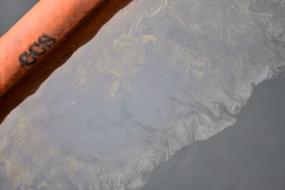
Risk of a major oil spill generates action in Olympia
Bills in the state legislature target oil spill threats to Puget Sound and its endangered killer whales.
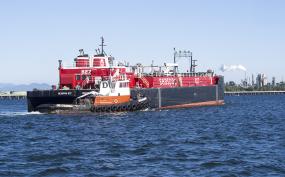
Oil spill risks by the numbers
An EPA-funded study of oil spill risks in Puget Sound forms the basis of new legislation to regulate vessel traffic in the region. We break down some of the numbers from the study and look at where the risks may be greatest.
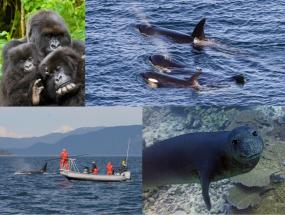
The orca docs: Can medical interventions help?
This three-part series explores opportunities and challenges of using medical interventions to save Puget Sound's southern resident orcas from extinction. Part 1 looks at how scientists might treat endangered southern resident orcas that face starvation and risks of disease; Part 2 considers how veterinarians have intervened with other animals in the wild, and how this might apply to orcas in Puget Sound; and Part 3 explores a federally approved vaccination program designed to ward of a deadly virus among endangered Hawaiian monk seals.
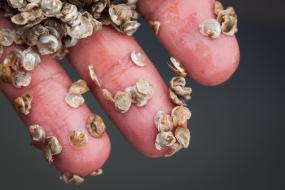
Return of a native: Olympia oysters are making a comeback
Puget Sound’s only native oysters were nearly wiped out in the 19th century from overharvesting. Now a network of scientists and advocates is working to restore them to their historical and cultural prominence.
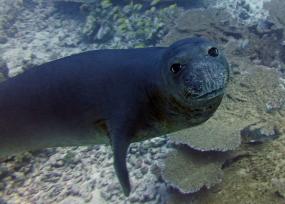
Vaccines now used to reduce the risk of extinction in Hawaiian monk seals
For critically endangered animal populations, experts worry that a highly infectious disease could be the final nail in the coffin, forcing the species into extinction. That’s one reason why federal authorities approved the development and deployment of a new vaccine to ward off the deadly morbillivirus among Hawaiian monk seals. The vaccination program raises the possibility of using vaccines to prevent disease among Puget Sound's southern resident killer whales, but no specific steps have been taken so far.

Wildlife rescues may inform orca strategies
As the plight of Puget Sound’s southern resident orcas becomes increasingly desperate, with the population dropping from 98 to 75 in just 22 years, scientists are weighing the options of medical intervention. In part two of our two-part series The Orca Docs we look at how veterinarians have intervened with other animals in the wild, and how this might apply to the situation here in Puget Sound. [Part one, "When should medical experts intervene to save a killer whale?" is also available.]

When should medical experts intervene to save a killer whale?
The death of a young female orca in September has sparked a discussion of how and whether scientists should step in with medical care for distressed animals in the wild. Medical intervention has become routine for some endangered mammals, but scientists say Puget Sound’s resident orcas present a series of unique challenges and ethical questions. In part one of our two-part series The Orca Docs we look at how scientists are preparing to treat endangered southern resident orcas that face starvation and risks of disease.
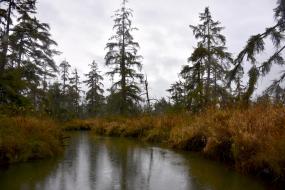
Tidal forests offer hope for salmon
Can scientists bring back the lost tidal forests of Puget Sound? It could take generations, but restoring this rare habitat will pay big dividends for Puget Sound’s salmon.

Respecting the rockfish of the Salish Sea
Puget Sound's rockfish have declined by 70% over the past few decades, prompting state and federal protection efforts. We look at some of the ways that scientists are working to reverse the fish's downward trend.

Harbor porpoises become increasing players in the Puget Sound food web
With a population growth of about 10 percent per year in inland waters, harbor porpoises are having an undetermined but growing effect on food dynamics in Puget Sound.
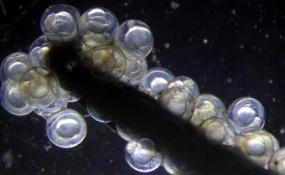
Climate change and ocean acidification may affect herring development
New research shows that warmer and more acidic oceans could lead to shorter embryos and higher respiration in Pacific herring.
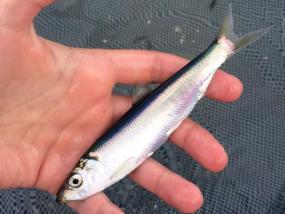
Managing the Salish Sea’s ‘Herring 401 K’
Scientists argue that herring managers should take a tip from stock market investors and diversify the population’s “portfolio.”
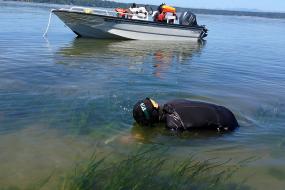
Studies show challenges for eelgrass restoration
As critically important eelgrass declines in some parts of Puget Sound, scientists are trying to plant more of it. The health of the ecosystem may be riding on their efforts, but what they are finding is something that farmers have known for thousands of years: Getting something to grow may be harder than you think.

Nights in the lives of the rhinoceros auklets of Protection Island
More than 70 percent of the seabird population of Puget Sound nests on a single island in the Strait of Juan de Fuca. That includes a massive colony of rhinoceros auklets that has drawn the interest of scientists and birders alike. Our writer Eric Wagner visited the island this summer and reports on a long-term study of the auklets that is revealing new information about the health of seabirds in the Salish Sea.

Marine mammals from distant places visit Puget Sound
The reasons for the surprise visits are unknown, but changes in environmental conditions here or elsewhere are one possibility.

For declining orcas, food is fate
Recent images of a mother orca appearing to grieve for her dead calf have brought worldwide attention to the plight of Puget Sound’s endangered Southern Resident orcas. As orca numbers decline, we look at how the effects of toxic chemicals on the whales are magnified even as the residents slowly starve from a general lack of Chinook salmon, their chief source of food.

Marine survival: New clues emerging in salmon deaths
An intensive research program in the U.S. and Canada is studying why so few salmon in the Salish Sea are returning home to spawn. It is uncovering a complex web of problems involving predators, prey and other factors that put salmon at risk as they migrate to the ocean. We present a four-part series on the Salish Sea Marine Survival Project, including new findings presented at the 2018 Salish Sea Ecosystem Conference last spring in Seattle.
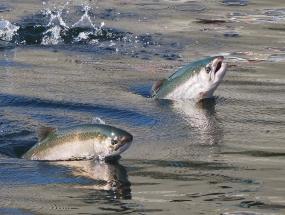
New studies on emerging threats to salmon
Chemicals, disease and other stressors can increase a salmon's chance of being eaten or reduce its ability to catch food. We wrap up our series on the Salish Sea Marine Survival Project with a look at some of the lesser-known, but still significant factors contributing to salmon declines in the Salish Sea.
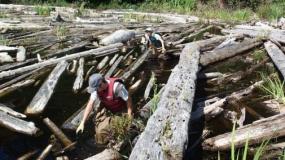
Removal of creosote-treated pilings may assist herring recovery
Researchers are analyzing the harmful effects of creosote-treated wood pilings on Pacific herring and shellfish in Puget Sound. Studies show that piling removal projects can ease the impacts, but only if carefully done.
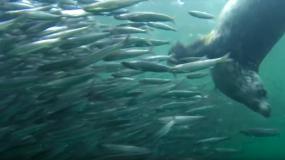
Could anchovies and other fish take pressure off salmon and steelhead?
A recent influx of anchovies into Puget Sound may have saved some steelhead from predators, but researchers seek more evidence to prove the connection. Our series on the Salish Sea Marine Survival Project continues with a look at these and other potential impacts from predators on the region's salmon and steelhead.
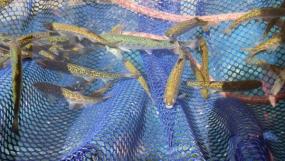
Size means survival for young salmon
Getting bigger faster can help save juvenile Chinook salmon from a gauntlet of hungry predators ranging from birds and marine mammals to larger fish. We continue our series on the Salish Sea Marine Survival Project with a look at what helps salmon grow and prepare for life in the open ocean.
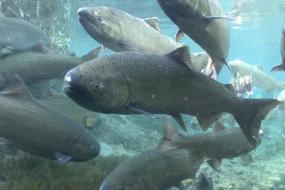
Opening the black box: What’s killing Puget Sound’s salmon and steelhead?
An intensive research program in the U.S. and Canada is studying why so few salmon in the Salish Sea are returning home to spawn. They are uncovering a complex web of problems involving predators, prey and other factors that put salmon at risk as they migrate to the ocean. We begin a four-part series on the Salish Sea Marine Survival Project, including new findings presented at the 2018 Salish Sea Ecosystem Conference last spring in Seattle.
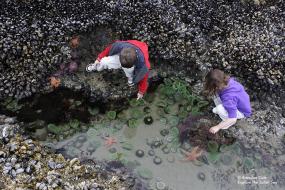
New book helps kids discover the Salish Sea
Kids around the region are learning about the Salish Sea thanks to a new book that is being offered — in many cases free of cost — to Washington schools and libraries. Explore the Salish Sea by Joe Gaydos and Audrey Benedict inspires the next generation to appreciate and perhaps someday protect the environment close at hand.
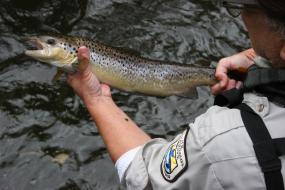
Despite WA ban on farmed salmon, BC impacts may flow across border
A high-profile salmon escape led to a ban on salmon farms in Washington earlier this year. But just across the border, scientists say salmon farms in British Columbia expose migrating fish from Puget Sound to potential maladies like parasites, bacteria and dangerous viruses. They say simply getting rid of salmon farms in Washington does not put the potential impacts to rest.
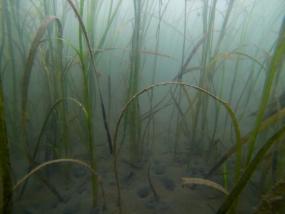
Ocean acidification may be twice as extreme in Puget Sound’s seagrass habitats, threatening Dungeness crabs
Ocean acidification could be up to twice as severe in fragile seagrass habitats as it is in the open ocean, according to a study published last April in the Proceedings of the National Academy of Sciences. The conditions may threaten Dungeness crabs by 2050 and will be especially pronounced in the winter, the study says.
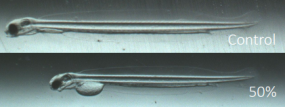
Stormwater mimics oil spill's effect on Pacific herring
Pacific herring exposed to stormwater in Puget Sound show some of the same effects as fish exposed to major oil spills. Symptoms include heart and developmental problems.
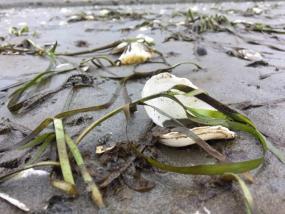
Diving deeper to understand eelgrass wasting disease
New studies show that eelgrass wasting disease is more common in warmer waters, leading to concerns over the future effects of climate change on eelgrass populations in Puget Sound. We continue our series on science findings from the 2018 Salish Sea Ecosystem Conference.
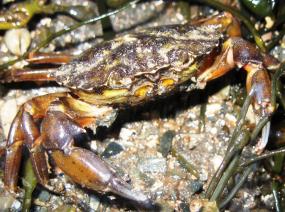
Where did the Puget Sound green crabs come from? We’re still not sure
Genetic testing shows that invasive European green crabs in Puget Sound likely did not come from the Sooke Basin in British Columbia as previously thought. New findings on the crab's origins were presented at the 2018 Salish Sea Ecosystem Conference in Seattle.
![Bay Mussels (Mytilus trossulus) on Edmonds Ferry Dock. Photo [cropped]: brewbooks (CC BY-SA 2.0) https://www.flickr.com/photos/brewbooks/8840874065 Bay Mussels (Mytilus trossulus) on Edmonds Ferry Dock. Photo [cropped]: brewbooks (CC BY-SA 2.0) https://www.flickr.com/photos/brewbooks/8840874065](https://www.eopugetsound.org/sites/default/files/styles/scale_width_285/public/topical_article/images/8840874065_da3b29ce56_crop_1200_0.jpg?itok=f8GftDPu)
Bay mussels in Puget Sound show traces of oxycodone
State agencies tracking pollution levels in Puget Sound have discovered traces of oxycodone in the tissues of native bay mussels (Mytilus trossulus) from Seattle and Bremerton area harbors. The findings were presented at the 2018 Salish Sea Ecosystem Conference in Seattle.

Kelp continues steady decline in Puget Sound
Scientists are trying to learn how to restore Puget Sound’s diminishing kelp forests in an effort to stave off habitat loss for rockfish and other threatened species.

Panel explores digital tech’s role in Salish Sea recovery
Bridging the gap between nature and technology might be a challenge for the Puget Sound region, but tech leaders could play an important role in protecting and restoring the ecosystem, according to a panel of experts at last week’s Salish Sea Ecosystem Conference in Seattle.

Future of orcas takes center stage at Salish Sea conference
Gov. Jay Inslee joined former Interior Secretary Sally Jewell to open three days of science talks at the Salish Sea Ecosystem Conference in Seattle. The conference includes about 700 scientific presentations on topics ranging from orcas to habitat restoration, from climate change to toxic chemicals.
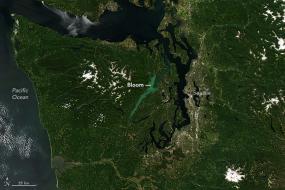
Does Puget Sound need a diet? Concerns grow over nutrients
As the region's population grows, scientists say we can expect to see increasing amounts of nitrogen and other elements flowing into Puget Sound. Known as “nutrients” these elements are naturally occurring and even necessary for life, but officials worry that nutrients from wastewater and other human sources are tipping the balance. That could mean big problems for fish and other marine life, gradually depleting the water of oxygen and altering the food web.
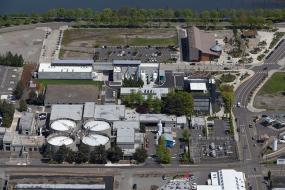
Sewage treatment plant in Olympia a leader in nitrogen removal
A regional sewage-treatment system in Thurston County has helped contain low-oxygen problems in Budd Inlet as the population continues to grow. The system cleans up some of the effluent for replenishing groundwater supplies.
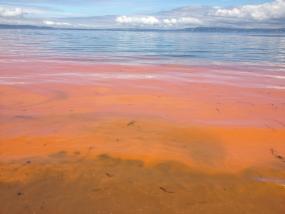
Dead plankton leave clues to a food-web mystery
High amounts of elements such as nitrogen can cause blooms of phytoplankton that sometimes trigger perturbations throughout the food web. This occurs most often in the spring and summer after the long, dark, cloudy days of winter begin to fade.

Puget Sound circulation triggers low-oxygen conditions at different times and in different places
The amount of oxygen in the Salish Sea is dependent on water circulation which distributes chemical elements such as nitrogen through the system.
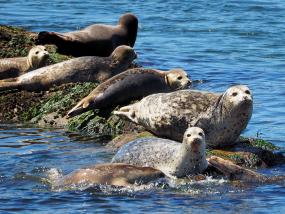
Study would explore changes to protections for seals and sea lions
As wildlife managers work to recover Puget Sound’s diminished Chinook population, a proposed white paper is expected to review the impacts of some of the salmon's chief predators. The study would include a section on potential management of seals and sea lions, prompting open discussion of a long taboo subject: Could officials seek to revise the Marine Mammal Protection Act — or even conduct lethal or non-lethal removal of seals and sea lions in some cases? Such actions are hypothetical, but we look at some of the ongoing discussions around the issue as prompted by a new resolution from the Puget Sound Leadership Council.

What is killing the coho?
Researchers are trying to determine which chemicals in stormwater are contributing to the deaths of large numbers of coho salmon in Puget Sound. It has prompted a larger question: What exactly is in stormwater, anyway?
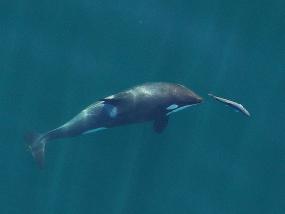
Seals and sea lions may be slowing salmon recovery, hurting orcas
Increased consumption of Chinook salmon by seals and sea lions in the Salish Sea “could be masking the success of coastwide salmon recovery efforts,” according to a new study published in the journal Scientific Reports. Endangered resident orcas are said to be declining in part due to a lack of available Chinook, the orcas' preferred prey.
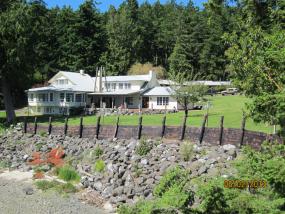
With sea-level rise, waterfront owners confront their options
Climate change could cause sea levels to rise more than four feet in some parts of Puget Sound, leaving shoreline residents with some tough decisions. Experts say fighting the waves with conventional seawalls may not be the answer.

Average high tides are creeping higher in Puget Sound
The average worldwide sea level has increased more over the past 150 years than during the previous 1,500 years, experts say, and the seas continue to rise at an ever-increasing pace.
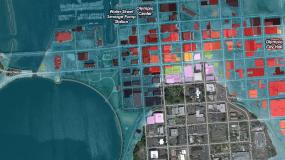
Local governments begin to plan for higher tides
Planning for rising seawater in Puget Sound has often focused on public property such as roads, buildings and utilities. Now local governments are looking more closely at private property despite regulations based on traditional flooding history.

PCBs in fish remain steady while other toxics decline
A new study shows a surprising decline in some toxic chemicals in Puget Sound fish, while levels of PCBs increased in some cases. Scientists say the study shows that banning toxic chemicals can work, but old contaminants remain a challenge as they continue to wash into Puget Sound.
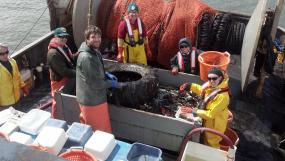
Monitoring helps to reveal hidden dangers in the food web
Toxic chemicals have been showing up in Puget Sound fish for more than a century, but consistent testing over the past 30 years has helped to reveal some unusual patterns of pollution.
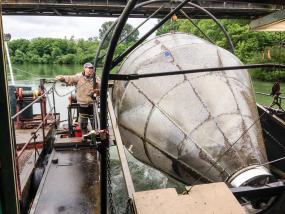
Are we making progress on salmon recovery?
In recent decades, hundreds of millions of dollars have been spent to restore habitat for Puget Sound salmon. In this article, we look at how scientists are gauging their progress. Are environmental conditions improving or getting worse? The answer may depend on where you look and who you ask.
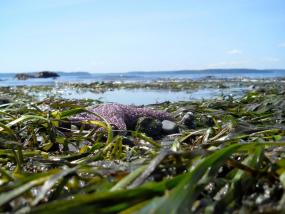
Eelgrass declines pose a mystery
Scientists want to know why eelgrass is on the decline in some areas of Puget Sound and not others. The answer will affect future strategies for protecting one of the ecosystem’s most critical saltwater plants.
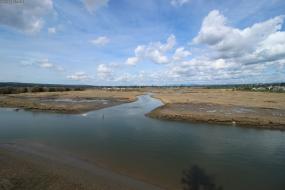
Saving the last estuaries
When rivers spill into Puget Sound, they provide some of the most productive habitat in the ecosystem. The ebb and flow of the tides creates a perfect mix of fresh and salt water critical for young salmon. But over the past 100 years, the region’s tidal wetlands have declined by more than 75%. Now a coalition of state and federal agencies has a plan to bring them back.
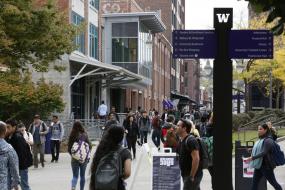
Urban lifestyles help to protect the Puget Sound ecosystem
The state of Washington estimates that the Puget Sound area will grow by more than 1.5 million residents within the next two decades. That is expected to have profound effects on the environment as more and more people move to undeveloped areas. The race is on to protect this critical rural habitat, but planners say what happens in the cities may be just as important.

Floodplain projects open doors to fewer floods and more salmon
A new approach to flood control is taking hold across Puget Sound. Rivers, scientists say, can be contained by setting them free. Conservationists hope this is good news for salmon recovery.
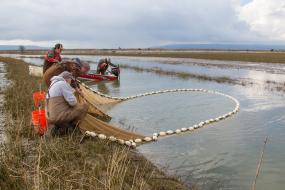
Finding a strategy to accelerate Chinook recovery
As threatened Chinook populations in Puget Sound continue to lose ground, the state is looking to new strategies to reverse the trend. In the Skagit watershed, the scientists — and the fish — are among those leading the way.

Bringing the shellfish back: How Drayton Harbor overcame a legacy of pollution
After a long struggle with pollution, Drayton Harbor has reopened to year-round commercial oyster harvesting for the first time in 22 years. Here’s how the community cleaned up its act, potentially showing the way for shellfish recovery throughout Puget Sound.
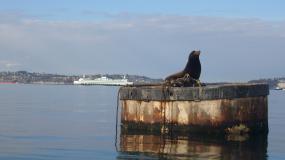
Study says predators may play major role in chinook salmon declines
A new study shows that increased populations of seals and sea lions are eating far more of Puget Sound’s threatened chinook than previously known, potentially hampering recovery efforts for both salmon and endangered killer whales.
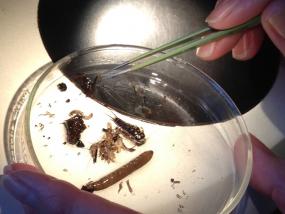
Healthy stream, healthy bugs
Many groups have been formed around the goal of saving salmon, but few people talk about a concerted effort to save microscopic creatures. Whether or not a pro-bug movement catches on, future strategies to save salmon are likely to incorporate ideas for restoring streambound creatures known as benthic invertebrates.
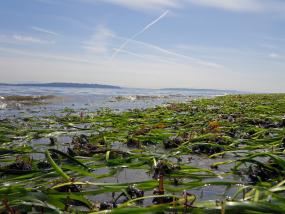
Eelgrass in Puget Sound is stable overall, but some local beaches suffering
Eelgrass, a marine plant crucial to the success of migrating juvenile salmon and spawning Pacific herring, is stable and flourishing in Puget Sound, despite a doubling of the region’s human population and significant shoreline development over the past several decades. [Story reprinted from UW Today.]
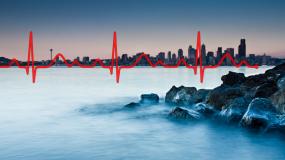
Implementation Strategies will target Puget Sound ‘Vital Signs’
New EPA-funded Implementation Strategies are designed to target Puget Sound recovery in the most direct and coordinated way ever conducted by state and federal agencies. We report on how these strategies will affect Puget Sound’s Vital Signs for years to come, and why you should care (a lot).
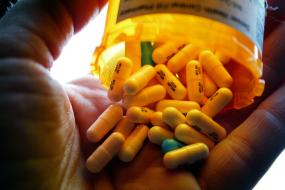
Concerns rise over rogue chemicals in the environment
Drugs like Prozac and cocaine have been showing up in the region’s salmon. But these are just some of the potentially thousands of different man-made chemicals that escape into the Salish Sea every day, from pharmaceuticals to industrial compounds. Now the race is on to identify which ones pose the greatest dangers.

New law will increase testing of chemicals
New federal legislation, approved overwhelmingly by the U.S. Congress in December 2015 and signed into law by President Obama in June 2016, is designed to make sure that people and the environment are not harmed by new and old chemicals on the market.
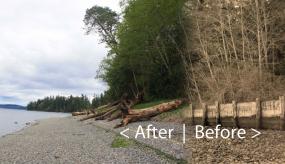
Hitting a wall: Can we fix Puget Sound’s beaches?
New numbers show progress in the state’s efforts to remove shoreline armoring, but they don’t tell the whole story.
![Bay Mussels (Mytilus trossulus) on Edmonds Ferry Dock. Photo [cropped]: brewbooks (CC BY-SA 2.0) https://www.flickr.com/photos/brewbooks/8840874065 Bay Mussels (Mytilus trossulus) on Edmonds Ferry Dock. Photo [cropped]: brewbooks (CC BY-SA 2.0) https://www.flickr.com/photos/brewbooks/8840874065](https://www.eopugetsound.org/sites/default/files/styles/scale_width_285/public/topical_article/images/8840874065_da3b29ce56_crop_1200.jpg?itok=OfqCr_7G)
Salish Sea snapshots: Mussel memory
Scientists are testing ways to use transplanted shellfish such as mussels to monitor toxic contaminants in Puget Sound.
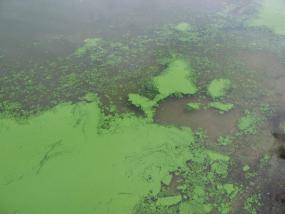
Salish Sea snapshots: Invasive species and human health
Invasive species are considered a top threat to the balance of ecosystems worldwide. New discoveries of non-native green crabs in Puget Sound have highlighted that concern here at home, but invasive species can impact more than just the food web. Some introduced species can produce toxins that accumulate in shellfish or by directly infecting the human body.
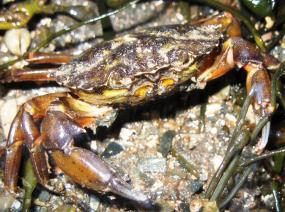
Second invasive green crab found in Puget Sound
Another European green crab has been spotted in Puget Sound prompting concern that the species may gain a foothold in the region.
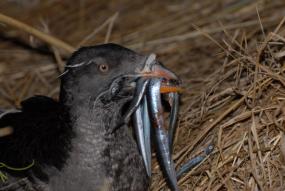
Salish Sea snapshots: Plastics in fish may also affect seabirds
Sand lance in parts of British Columbia are ingesting small pieces of plastic that may be passed through the food web.
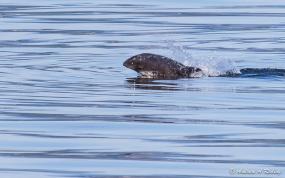
The return of the pig
After an almost complete collapse in the 1970s, harbor porpoise populations in Puget Sound have rebounded. Scientists are celebrating the recovery of the species sometimes known as the "puffing pig."
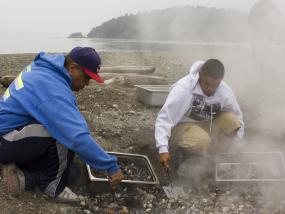
Clam hunger
Social scientists around the Salish Sea are predicting the effects of environmental change through the lens of culturally important foods.
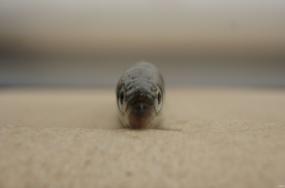
The secret lives of forage fish: Where do they go when we aren’t looking?
Some of the most important fish in the Salish Sea food web are also the most mysterious. Researchers have only begun to understand how many there are, where they go, and how we can preserve their populations for the future. A University of Washington researcher describes how scientists are looking into the problem.

Invasive stowaways threaten Puget Sound ecosystem
Gaps in regulations could allow invasive species to hitch a ride on ships and boats. We report on some of the potential impacts, and how state and federal agencies are trying to solve the problem.
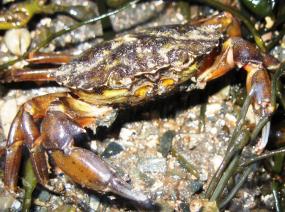
Green crabs could impair Puget Sound shellfish operations
Concerns over the potential arrival of the European green crab have inspired a small army of volunteers. A search is underway for early signs of an invasion.
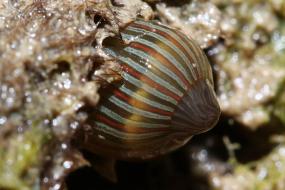
Building a baseline of invasive species in Puget Sound
Almost twenty years ago, volunteer biologists began an intensive survey for invasive species in the marine waters of Puget Sound. In a little over a week of hunting, they found 39 such species, including 11 never before seen in the region.
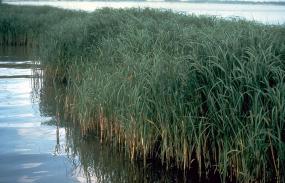
Invasive marine species: Washington state priorities
The Washington Invasive Species Council evaluated more than 700 invasive species in and around Washington, considering their threats to the state’s environment, economy, and human health. They included terrestrial plants and animals, aquatic plants and animals (both freshwater and saltwater), insects and diseases. In the end, the council listed 50 “priority species” for action, including five marine animals and two marine plants, along with one virus that infects fish.
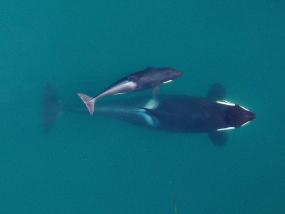
Killer whale miscarriages linked to low food supply
New techniques for studying orcas have been credited with breakthroughs in reproductive and developmental research. Drones and hormone-sniffing dogs are helping scientists connect declines in food supply with low birth rates and poor health. Update: The research described in this 2016 article has now been published in the 6/29/17 issue of the journal PLOS ONE.
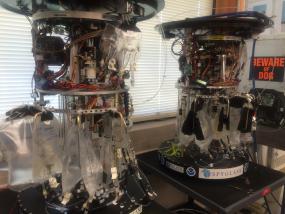
Salish Sea snapshots: Detecting harmful algal blooms
Environmental samplers may provide early detection of harmful algal blooms (HABs) in Puget Sound. This toxic algae is expected to increase as the climate changes, bringing with it new and potentially more severe outbreaks of shellfish poisonings.
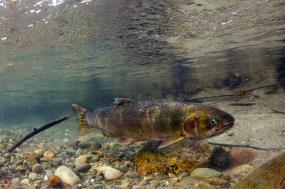
Advances in technology help researchers evaluate threatened Puget Sound steelhead
New, smaller acoustic tags will allow scientists to track steelhead migrations in Puget Sound in ways that were once impossible. Will they provide answers to the mysterious decline of these now-threatened fish?
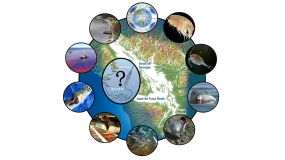
Mystery remains in deaths of young salmon
The Salish Sea Marine Survival Project has mobilized dozens of organizations in the U.S. and Canada to find an answer to one of the region's greatest mysteries. What is killing so many young salmon before they can return home to spawn? A series of talks at the 2016 Salish Sea Ecosystem Conference brought together some of the latest research.
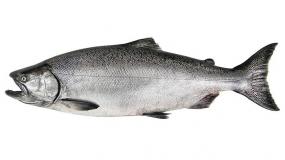
Contaminants higher in resident 'blackmouth' Chinook
Many of Puget Sound's Chinook salmon spend their entire lives in local waters and don't migrate to the open ocean. These fish tend to collect more contaminants in their bodies because of the sound's relatively high levels of pollution.

Salish Sea 'slime' vital for shorebirds
It turns out that a gooey substance known as biofilm is a big deal for Salish Sea shorebirds, providing critical food for some species. But could a proposed port expansion in Vancouver threaten this slimy resource?
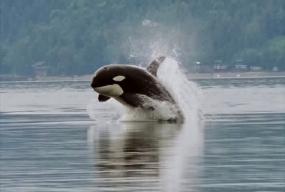
New theory rethinks spread of PCBs and other toxics in Puget Sound
Researchers are proposing a shift in thinking about how some of the region’s most damaging pollutants enter Puget Sound species like herring, salmon and orcas.

Suspended marine pollutants more likely to enter food web
Researchers are studying how persistent pollutants such as PCBs avoid settling to the bottom of Puget Sound. This article continues our coverage of new theories on the spread of toxic chemicals in the food web.
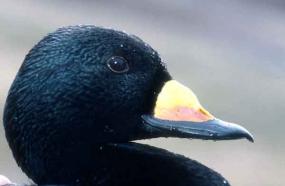
Conference snapshot: The number of species of concern in the Salish Sea is growing steadily
The number of species of concern in the Salish Sea is growing at an average annual rate of 2.6%, according to a report published in the proceedings of the 2016 Salish Sea Ecosystem Conference in Vancouver, B.C.

Conference snapshot: Long-term study looks at impacts of shoreline armoring
A new peer-reviewed study reports significant findings on the impacts of shoreline armoring in the Salish Sea.
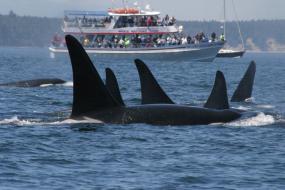
Conference snapshot: Listening to the Salish Sea
Scientists are realizing that underwater noise in the Salish Sea affects a broad range of species, even plankton. Read a Q & A with the organizers of the session 'From plankton to whales: underwater noise and its impacts on marine life.'
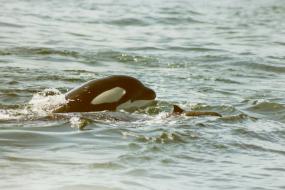
Resident killer whales sometimes attack porpoises but never eat them
The mysterious practice of killing porpoises may have a useful function, but it has yet to be fully explained, according to orca researcher Deborah Giles.

Perception is the key to a better future, says Canadian astronaut
Dr. Roberta Bondar opens the three-day Salish Sea Ecosystem Conference in Vancouver, B.C., by challenging people to see things in different ways.

Gearing up for the 2016 Salish Sea Ecosystem Conference
About 4,600 miles of coastline wind from southern Puget Sound to northern British Columbia along what is known as the Salish Sea. It is a land of connections and contradictions. Snowmelt from three national parks feeds more than a thousand creeks and rivers that in turn flow to the rich floodplains and estuaries of places like the Skagit and Nisqually deltas. It is one of the most diverse and spectacular ecosystems in the world, a fact made even more incredible because it is also home to 8 million people.

State guidelines offer new approaches to shoreline protection
Bulkhead removal is becoming an attractive option for many shoreline property owners as awareness spreads of their geological and ecological impacts, and as aging bulkheads come up for replacement. New state guidelines provide alternatives to hard armor.

Sources of sand: maps show crucial “feeder bluffs”
For more than a hundred years, property owners have seen shoreline erosion as the enemy. But it turns out that in many cases erosion is actually a good thing — crucial, according to scientists — because it provides the sand and gravel needed for healthy beaches.

Studies point to gap in permits for shoreline armoring
A significant number of Puget Sound property owners have been altering their shorelines without required permits. A new report suggests that state and local regulators should increase enforcement and make penalties more costly for violators.

Shoreline restoration turns to private property owners
By removing bulkheads where they can, property owners are improving shoreline habitat, one piece at a time. Officials from county and nonprofit groups have been offering assistance and finding new ways to connect with property owners.

Spawning habitat for forage fish being lost to rising tides
Where shoreline bulkheads remain in place, the loss of spawning habitat used by surf smelt is likely to reach 80 percent.

Forage fish are losing places to lay their eggs
Rising sea levels are expected to exacerbate habitat loss caused by bulkheads, according to studies in the San Juan Islands.
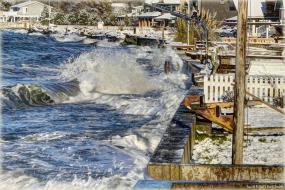
Shoreline armoring's effect on the food web
The removal of shoreline armoring in Puget Sound has become a priority for state and federal agencies, but until recently there have been relatively few scientific studies of armoring's local impact. New research looks at the pronounced biological and ecological effects of these common shoreline structures, especially for tiny beach-dwelling creatures that make up the base of the food web.

Will Ballard Locks withstand a major earthquake?
For close to 100 years, Seattle's Ballard Locks has been one of the region's busiest waterways, drawing major boat traffic along with millions of tourists. But as it prepares to celebrate its centennial, the aged structure is also drawing the concern of engineers. They worry that an earthquake could cause the locks to fail, draining massive amounts of water from Lake Washington and Lake Union. In some scenarios, the two lakes could drop by as much as 20 feet, stranding boats, disabling bridges and causing big problems for salmon restoration.
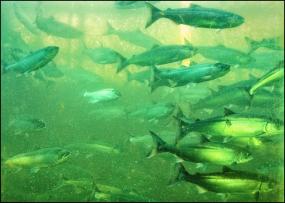
Salmon live in a topsy-turvy world upstream of the Ballard Locks
Chinook, coho and sockeye salmon, along with steelhead trout, live in the Lake Washington watershed and navigate a treacherous route through the Ballard Locks on their way to Puget Sound.
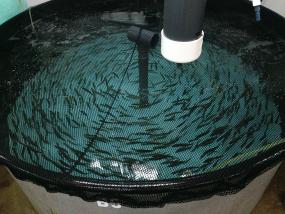
Disease in herring threatens broader food web
Pacific herring have long been considered an essential part of the Puget Sound food web. Now, studies are beginning to reveal how diseases in herring could be reverberating through the ecosystem, affecting creatures large and small. We continue our coverage of the ecological impacts of disease in Puget Sound with this look at the region's most well-known forage fish.
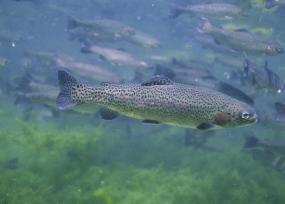
Are diseases playing a role in salmon decline?
Chinook, coho and steelhead populations in Puget Sound have declined dramatically over the past 30 years. In some cases, counts of fish returning to the rivers are just a tenth what they were in the 1980s. While many possible causes of this decline are under consideration, some researchers are focusing on the combined effects of predators and disease. This article continues our coverage of the ecological impacts of disease in Puget Sound.
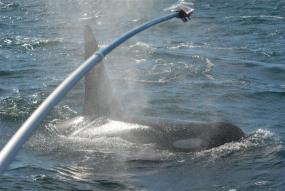
Concerns rise over potential impacts of disease on the ecosystem
From orcas to starfish to humans, disease affects every living creature in the ecosystem. Scientists are increasingly alarmed by its potential to devastate already compromised populations of species in Puget Sound.
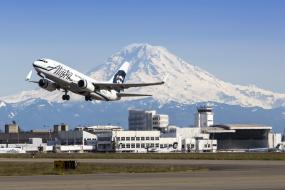
Airport offers a glimpse at tightening stormwater regulations
How does one of the West's busiest airports deal with extreme stormwater, and what does that mean for water quality standards in the rest of the state?

Stormwater fixes could cost billions
Pollution from stormwater has been called one of the greatest threats to Puget Sound. How much will it cost to hold back the rain? A new EPA-funded study says the price could reach billions per year, a figure that dwarfs current state and federal allocations.
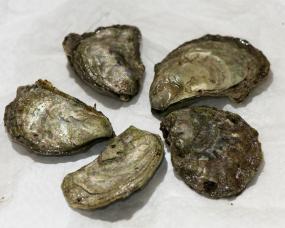
Gifts from the sea: shellfish as an ecosystem service
The region's famed mollusks provide more than just money and jobs. They offer what are called ecosystem services—a wide variety of benefits that humans derive from an ecosystem.

Nature inspires new approach to flood control
Scientists are rethinking floodplain management in Puget Sound. Can we have our farms and salmon too?
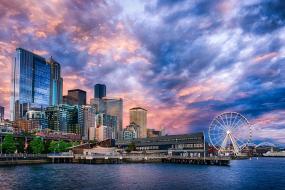
Brighter future for salmon at downtown seawall
The decaying seawall along Seattle’s waterfront is providing scientists with an opportunity to improve long-lost habitat for migrating salmon. It could also show the way for habitat enhancements to crumbling infrastructure worldwide. One University of Washington researcher describes the project.
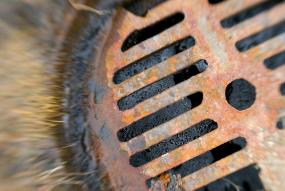
Common, everyday activities now the leading sources of toxics in Puget Sound
New research presented at the 2014 Salish Sea Ecosystem Conference shows that some of the greatest dangers to Puget Sound marine life come from our common, everyday activities. These pervasive sources of pollution are so woven into our lives that they are almost invisible to us, but it’s becoming impossible to ignore their effects.
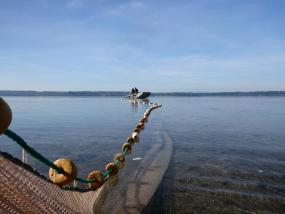
No salmon left behind: The importance of early growth and freshwater restoration
The growth and survival of young salmon in streams, river deltas and floodplains are seen as crucial pieces of the salmon recovery puzzle. In part two of this two-part series, researchers at the Salish Sea Ecosystem Conference in Seattle say the complexities of the salmon life cycle require new coordination among scientists.
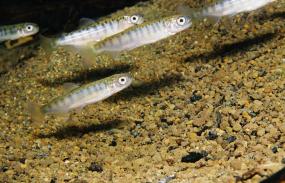
What is killing young salmon in Puget Sound?
Scientists say Puget Sound’s salmon are dying young and point to low growth rates in the marine environment as a possible cause. In part one of this two-part series, scientists consider threats facing young salmon in the open waters of Puget Sound.

Shedding new light on eelgrass recovery
Scientists say eelgrass, an unassuming flowering plant found just off shore in Puget Sound, is vital to the health of the ecosystem. They also say the plant is declining. New and increasingly urgent efforts to restore it brought a group of researchers to the 2014 Salish Sea Ecosystem Conference.
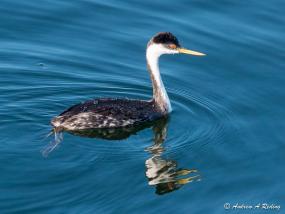
Declines in marine birds trouble scientists
Why did all the grebes leave? Where did they go? And what does their disappearance say about the health of the Salish Sea? Seasonal declines among some regional bird species could hold important clues to the overall health of the ecosystem.
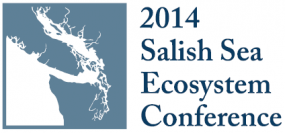
About the Salish Sea Currents series
Last spring, the Salish Sea Ecosystem Conference in Seattle brought together more than a thousand of the region's leading scientists and managers with one clear goal: To better understand the state of the ecosystem and to look to the future. It was the premier showcase for the science driving Salish Sea recovery, and a rare opportunity.
